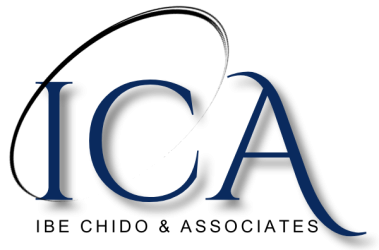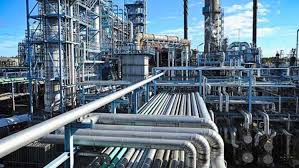Introduction
Nigeria, Africa’s largest oil producer, has long struggled with low domestic refining capacity. With the Petroleum Industry Act (PIA) 2021 and the establishment of the Nigerian Midstream and Downstream Petroleum Regulatory Authority (NMDPRA), new opportunities now exist for businesses to refine crude oil locally.
If you are planning to set up a refinery, whether a modular plant or a full-scale facility, you must obtain the necessary licenses from NMDPRA. This guide provides a step-by-step roadmap on how to obtain a crude oil refining license in Nigeria, including requirements, costs, timelines, and FAQs, all based on official regulatory sources.
Who Issues the License?
The NMDPRA is the statutory body that regulates all midstream and downstream petroleum operations, including refinery construction and operation. It acts under the Petroleum Industry Act (PIA) 2021 and issues refinery licenses through its Central Electronic Licensing and Permit System (CELPS).
Additionally, the Nigerian Upstream Petroleum Regulatory Commission (NUPRC) oversees crude allocation under the Domestic Crude Supply Obligation (DCSO), which may apply to refiners sourcing crude domestically.
Legal Framework
-
Petroleum Industry Act (PIA), 2021 – establishes licensing rules for refineries.
-
Midstream & Downstream Petroleum Operations Regulations – details procedures for license applications and renewals.
-
NMDPRA CELPS portal – online platform for licensing applications, payments, and tracking.
-
NUPRC DCSO framework – governs crude allocation to domestic refineries.
Who Should Apply?
You must obtain a refining license if your company intends to:
-
Construct a new crude oil refinery (greenfield or modular).
-
Operate or re-commission an existing refinery.
-
Build or operate any hydrocarbon processing plant that refines crude.
Important: Individuals cannot apply. Only duly incorporated companies registered with the Corporate Affairs Commission (CAC) are eligible.
Licensing Pathway: Three Key Stages
Refinery licensing typically follows three progressive stages:
-
Approval to Establish (ATE / License to Establish) – Preliminary approval based on feasibility and environmental scoping.
-
Approval to Construct (ATC) – Authorisation to build after technical and environmental evaluation.
-
License to Operate (LTO) – Final permit to commence operations after inspections and commissioning.
This phased system ensures that environmental, safety, and community standards are upheld.
Step-by-Step Guide to Obtaining a Refining License
Step 0 — Pre-Application Preparation
Before applying, ensure the following are in place:
-
Corporate Setup: Register your company with CAC and obtain a TIN.
-
Feasibility Study: Prepare financial models and proof of funding.
-
Environmental Assessment: Begin EIA/ESIA scoping and stakeholder engagement.
-
Technical Design: Complete Front-End Engineering Design (FEED), P&IDs, and process flow diagrams.
-
Security Measures: Plan for anti-theft and safety compliance.
Step 1 — Register on CELPS
-
Create a corporate account on the NMDPRA CELPS portal.
-
Upload company incorporation documents, TIN, and directors’ details.
-
CELPS will be your hub for all licensing submissions and payments.
Step 2 — Apply for Approval to Establish (ATE)
-
Submit your application via CELPS with feasibility studies, preliminary EIA report, land documents, and CSR/host community plans.
-
Pay the prescribed application fee through the portal.
Step 3 — Technical Evaluation & Inspections
-
NMDPRA reviews your technical and financial submissions.
-
Expect requests for clarifications, additional documentation, and site visits.
Step 4 — Obtain Approval to Construct (ATC)
-
Issued after successful technical and environmental reviews.
-
Authorises you to begin procurement and construction.
-
May include conditions such as bonds, local content commitments, and timelines.
Step 5 — Secure Crude Allocation (if applicable)
-
If you need domestic crude under DCSO, apply to NUPRC.
-
Provide proof of technical capacity, off-take agreements, and NMDPRA license status.
Step 6 — Apply for License to Operate (LTO)
-
Submit commissioning reports, safety certificates, laboratory accreditation, and final EIA approvals.
-
NMDPRA conducts final inspections before granting LTO.
Step 7 — Compliance & Renewals
-
Once operational, you must comply with:
-
Annual reporting.
-
Safety and environmental audits.
-
License renewal procedures.
-
Required Documents Checklist
-
CAC Certificate & Memorandum/Articles of Association.
-
Board Resolution authorising the refinery project.
-
Feasibility Study & Proof of Funding.
-
Technical documents: FEED, P&IDs, process diagrams.
-
Environmental documents: EIA/ESIA & EMP.
-
Land ownership or lease agreements.
-
Safety plans (HAZOP, emergency response).
-
Local Content Plan.
-
Payment receipts from CELPS.
Costs and Fees
The exact fees vary depending on refinery capacity and license type. Some published charges include:
| Permit Category | Fee (₦) | Notes |
|---|---|---|
| General Permit | 5,000 + ₦500 service charge | For small industry permits |
| Major Permit | 25,000 + ₦2,500 service charge | For larger service permits |
| Specialised Permit | 250,000 + ₦7,500 service charge | For specialised permits |
| Refinery License | Project-specific | Fees issued via CELPS invoice |
Additional Costs:
-
Environmental approvals (consultants + NESREA fees).
-
Inspections & technical verifications.
-
Core project capex (millions to billions, depending on scale).
Timelines
-
CELPS registration: Immediate to a few days.
-
ATE processing: Weeks to months.
-
ATC approval: Several months.
-
LTO (final license): Post-construction & commissioning; may take up to a year.
Pro tip: Plan conservatively—expect delays due to environmental assessments, community issues, or incomplete submissions.
Common Reasons for Delays or Rejection
-
Incomplete or forged documents.
-
Inadequate technical designs or safety plans.
-
Weak financial proof or funding gaps.
-
Missing environmental approvals.
-
Failure to meet local content obligations.
-
Land or crude supply disputes.
FAQs (People Also Ask)
Q1: How long does it take to get a refinery license?
It can take months to over a year depending on the project scale and completeness of documentation.
Q2: Who issues refinery licenses in Nigeria?
The NMDPRA, under the PIA 2021.
Q3: Can I operate a refinery without a license?
No. Operating without a license is illegal and punishable under Nigerian law.
Q4: How much does it cost to get a license?
Costs vary by project scale. Application fees are small compared to overall capital costs, which run into millions.
Q5: Do modular refineries follow the same process?
Yes. They still require ATE, ATC, and LTO, though timelines may be shorter.
Q6: Do I need crude allocation to operate?
Yes, if you want to source domestic crude through the DCSO. Apply to NUPRC for allocation.
Common Misconceptions
-
“Licensing is just paperwork.” – False. It involves technical, financial, and safety scrutiny.
-
“Modular refineries don’t need full approvals.” – False. They follow the same staged process.
-
“Hiring consultants guarantees approval.” – False. Only compliance and documentation ensure success.
Enforcement & Penalties
Unlicensed refining is a criminal offence in Nigeria. NMDPRA and security agencies actively clamp down on illegal refineries, with penalties including seizure, blacklisting, and prosecution.
Project Timeline Snapshot
-
Months 0–2: Company registration, feasibility study, CELPS setup.
-
Months 2–6: Submit ATE application.
-
Months 6–10: Secure ATE, prepare ATC documents.
-
Months 10–24: Construction & monitoring.
-
Months 24–30: Commissioning & LTO application.
-
Month 30+: Commercial operations begin.
Conclusion
Securing a crude oil refining license in Nigeria is a complex but navigable process if approached methodically. By preparing thorough documentation, engaging accredited consultants, and working closely with NMDPRA via the CELPS portal, businesses can position themselves for approval.
If you are ready to start your refinery project:
-
Set up your company and documents.
-
Register on CELPS.
-
Engage technical and environmental consultants.
-
Plan your crude supply strategy with NUPRC.
With the right preparation, your refinery project can move from concept to commercial operation within Nigeria’s new regulatory framework.


